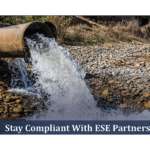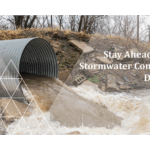
In today’s world, environmental compliance is an essential aspect of managing and maintaining our natural resources. Woodlands, in particular, play a significant role in preserving biodiversity and providing crucial ecosystem services. To ensure that these woodlands are properly managed and protected, environmental compliance auditing becomes a vital tool for monitoring and assessing their conservation efforts.
Understanding Environmental Compliance Auditing
Environmental compliance auditing is a comprehensive process that evaluates whether an organization or individual is following the required environmental laws, regulations, and standards. This auditing process serves to identify any areas of non-compliance and helps develop strategies for mitigating risks and improving environmental stewardship.
Definition and Importance of Environmental Compliance Auditing
Environmental compliance auditing is an objective evaluation of an entity’s environmental management systems and practices. It involves a systematic review of processes, documentation, and activities to determine compliance with applicable laws, regulations, and permits.
The importance of environmental compliance auditing cannot be overstated. It provides a mechanism to ensure that woodlands are being managed responsibly, minimizing negative impacts on the environment. By identifying areas of non-compliance, auditors can recommend corrective actions, facilitating greater sustainability in woodland management.
Key Components of an Environmental Compliance Audit
An effective environmental compliance audit comprises various key components. These include:
- Evaluation of environmental policies and procedures
- Assessment of environmental permits and licenses
- Review of environmental monitoring and reporting
- Inspection of waste management and disposal practices
- Assessment of compliance with air and water quality regulations
- Examination of hazardous materials handling and storage
By examining these components, auditors can identify potential areas of non-compliance and recommend corrective actions to mitigate risks and promote sustainable woodland management.
One important aspect of environmental compliance auditing is the evaluation of environmental policies and procedures. This involves a thorough examination of an organization’s written policies and procedures to ensure that they align with applicable environmental laws and regulations. Auditors carefully review these documents to identify any gaps or inconsistencies that may indicate non-compliance.
In addition to evaluating policies and procedures, auditors also assess environmental permits and licenses. These documents grant organizations the legal authority to carry out certain activities that may have an impact on the environment. By reviewing these permits and licenses, auditors can verify that the organization is operating within the boundaries set by regulatory authorities.
Another crucial component of an environmental compliance audit is the review of environmental monitoring and reporting. This involves examining the organization’s systems for monitoring and measuring environmental parameters, such as air and water quality. Auditors assess the accuracy and reliability of these monitoring systems to ensure that the organization is effectively tracking its environmental performance.
Furthermore, auditors inspect waste management and disposal practices to ensure that the organization is handling and disposing of waste materials in a safe and environmentally responsible manner. They assess whether proper procedures are in place to minimize the generation of waste, promote recycling and reuse, and ensure the proper treatment and disposal of hazardous materials.
Compliance with air and water quality regulations is also a key focus of environmental compliance auditing. Auditors assess whether the organization is meeting the required standards for air emissions and water discharges. They examine the organization’s monitoring data, permits, and records to determine compliance with these regulations and identify any potential areas for improvement.
Lastly, auditors examine how hazardous materials are handled and stored within the organization. They evaluate the organization’s procedures for the safe storage, handling, and disposal of hazardous substances to ensure that they are being managed in accordance with applicable regulations. This helps to prevent accidents, spills, and other incidents that could harm the environment and human health.
In conclusion, environmental compliance auditing plays a vital role in ensuring that organizations and individuals are adhering to environmental laws, regulations, and standards. By evaluating various components such as policies, permits, monitoring systems, waste management practices, and hazardous materials handling, auditors can identify areas of non-compliance and recommend corrective actions. This promotes greater sustainability in woodland management and helps protect the environment for future generations.
The Role of Auditing in Woodlands Management
Auditing plays a crucial role in woodlands management, contributing to their long-term sustainability and protection.
The Importance of Regular Audits in Woodlands
Regular audits ensure that woodlands are being managed in accordance with environmental laws and regulations. These audits provide an unbiased assessment of an organization’s compliance status, allowing for effective monitoring of their environmental performance. By conducting audits on a regular basis, woodlands can identify and rectify areas of non-compliance promptly, minimizing potential harm to the environment.
How Auditing Contributes to Sustainable Woodlands Management
Auditing contributes to sustainable woodlands management by promoting transparency, accountability, and continuous improvement. Through the audit process, organizations can identify opportunities for enhancing their environmental performance, such as implementing innovative conservation methods or adopting eco-friendly practices. This continuous improvement fosters the long-term sustainability of woodlands and ensures their preservation for future generations.
The Process of Environmental Compliance Auditing in Woodlands
The process of environmental compliance auditing in woodlands involves several stages, each essential for ensuring a thorough and effective evaluation.
Pre-Audit Activities and Planning
Before conducting an audit, proper planning is crucial to ensure its success. This includes defining the audit objectives, establishing the audit scope, and assembling a skilled audit team. Additionally, conducting a comprehensive review of relevant documentation, permits, and regulations is necessary for identifying potential areas of non-compliance.
Conducting the Audit: Inspection and Evaluation
The audit process encompasses on-site inspections, interviews, and document evaluations. Auditors assess compliance with laws and regulations, record observations, and determine whether procedures and practices align with established standards. Throughout the inspection, auditors maintain objectivity and impartiality, striving to identify any areas of concern objectively.
Post-Audit Activities: Reporting and Follow-up
Following the audit, a detailed report is prepared, documenting findings, recommendations, and opportunities for improvement. Audit reports facilitate transparency and accountability, providing organizations with clear guidance on rectifying non-compliance issues and improving their environmental performance. Follow-up activities ensure that recommended actions are implemented, and compliance is achieved.
Challenges in Woodlands Environmental Compliance Auditing
While environmental compliance auditing is essential, it also comes with a specific set of challenges in the context of woodland management.
Common Obstacles in Conducting Audits
One significant challenge faced during audits is the vast expanse of woodlands, making it difficult to cover all areas comprehensively within limited timeframes. Additionally, access restrictions, such as sensitive habitats or private lands, may pose challenges to auditors. Contending with varying weather conditions and terrain can also affect the efficiency and accuracy of audits.
Strategies to Overcome Auditing Challenges
To overcome these challenges, auditors can adopt various strategies. Utilizing technology, such as remote sensing and geospatial data, can help cover larger areas efficiently. Collaborating with local communities, landowners, and conservation organizations can facilitate access to private lands and foster mutual support. Incorporating seasonal audits and factoring in weather conditions during audit planning contributes to optimizing audit effectiveness.
Future Trends in Environmental Compliance Auditing
As our understanding of environmental issues continues to evolve, so too does the field of environmental compliance auditing. Several trends are shaping the future of auditing practices in woodland management.
Technological Innovations in Auditing
Advancements in technology are revolutionizing the auditing process. The use of remote sensing, drones, and analytical software allows auditors to collect precise data, conduct virtual inspections, and analyze large datasets efficiently. These technological innovations result in more accurate and comprehensive audits, enhancing the effectiveness of woodland management.
Evolving Regulations and Their Impact on Auditing
Regulations governing woodland management are constantly evolving to address emerging environmental challenges. As new regulations are introduced, auditors must stay informed to ensure audits remain relevant and in compliance with the latest standards. Adapting auditing processes to meet these evolving regulations and incorporating emerging best practices results in more robust audits and improved woodland conservation efforts.
In Conclusion
Environmental compliance auditing is vital for maintaining the integrity of woodlands and ensuring their sustainable management. By understanding the definition and importance of environmental compliance auditing, recognizing the role audits play in woodlands management, and understanding the auditing process, we can overcome challenges and embrace future trends to enhance woodland conservation efforts. Through effective auditing practices, we can protect our woodlands and preserve them for future generations to enjoy.
As we recognize the critical role of environmental compliance auditing in the sustainable management of woodlands, it’s imperative to partner with experts who can guide you through the complexities of environmental regulations. ESE Partners is dedicated to responsibly moving your business forward with innovative solutions to environmental challenges. Our experienced team of environmental engineers and scientists is ready to support your woodland management goals with tailored assessment, remediation, and compliance services. If you’re committed to enhancing your environmental stewardship and ensuring the longevity of your woodlands, we invite you to Request A Proposal today and take the next step towards sustainable success.








